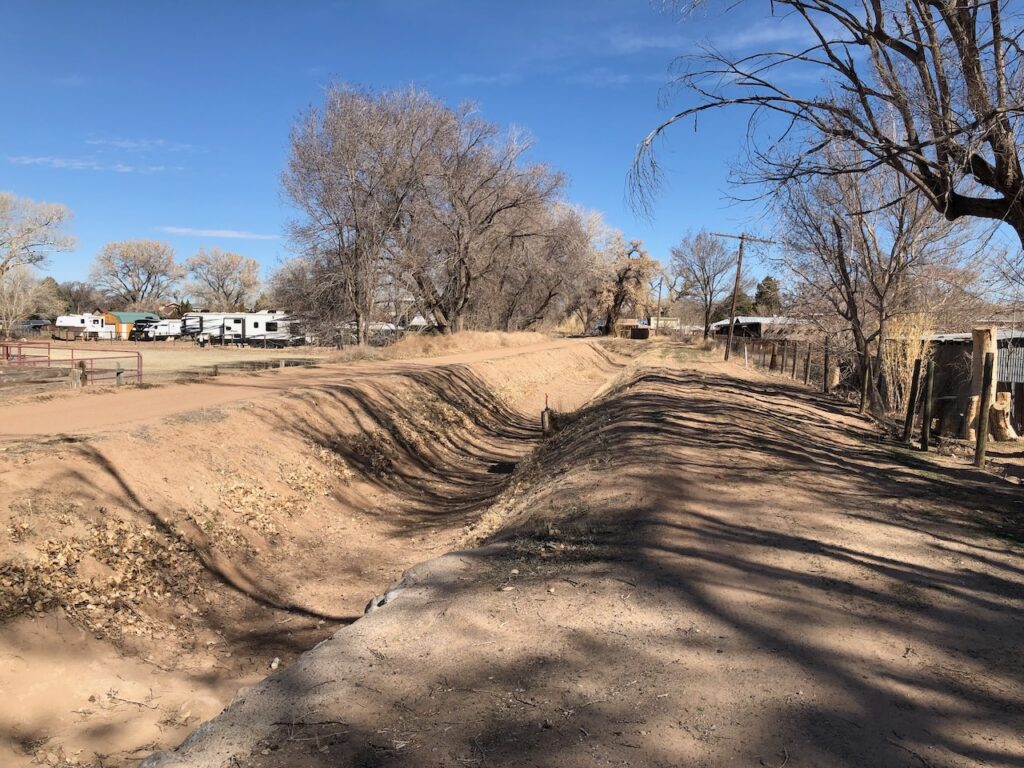I feel this morning a bit like a kid watching the NORAD map of Santa on his global travels, as I hit “reload” on the Middle Rio Grande Conservancy District’s new gaging data page.
The district opened the diversion gates early this morning at Cochiti Dam, at the head of what we call New Mexico’s “Middle Rio Grande Valley.”
As I write, the water’s made it through old Spanish colonial village of Peña Blanca and onto Kewa Pueblo, the Native American community that has lived there from time immemorial.
I spent yesterday on a leisurely bike ride up the valley with a friend, starting at downtown Albuquerque and following a mix of ditchbanks and Guadalupe Trail, road that stops and starts and zigs and zags in an urban design – “undesign?” – well suited to leisurely rides.
We spent a good stretch of the ride on the Griegos Drain, built in the 1930s to drain the swamps that were making the valley increasingly ill-suited to modernity. The upper end of the ride took us straight up the old flood path that the river would have taken in high flow years, before the community came together to build levees and drains and the consolidated irrigation system we’d been riding, things that made modern Albuquerque possible.
I love this moment of promise. Here’s the final two paragraphs of our forthcoming book.
Joey Trujillo, manager of a team of Conservancy District ditchriders, a product of Albuquerque’s South Valley who grew up playing in ditches and now managed them, stood next to a newly flowing Albuquerque Main canal one March day in the early 2000s, describing the joy of watching the arrival of the first water of spring. The swamps and the flood menace were one that warm spring day. The trees bore the promise of spring, buds not yet green, as the dry ditch took its first drink.
It’s like you can feel the valley breathing in, he said.


John:
Nice post. It is truly a miraculous time. My baby oak tree has a nascent trunk six inches tall and two new leaves. I never cease marvel at the sequence of event that led to life on a barren piece of Rock formed from absolutely nothing.
Bill.
We are indeed fortunate to live in a place where old ways of living give us meaning to the changing seasons. I agree about feeling the land breathe. This a real phenomenon.